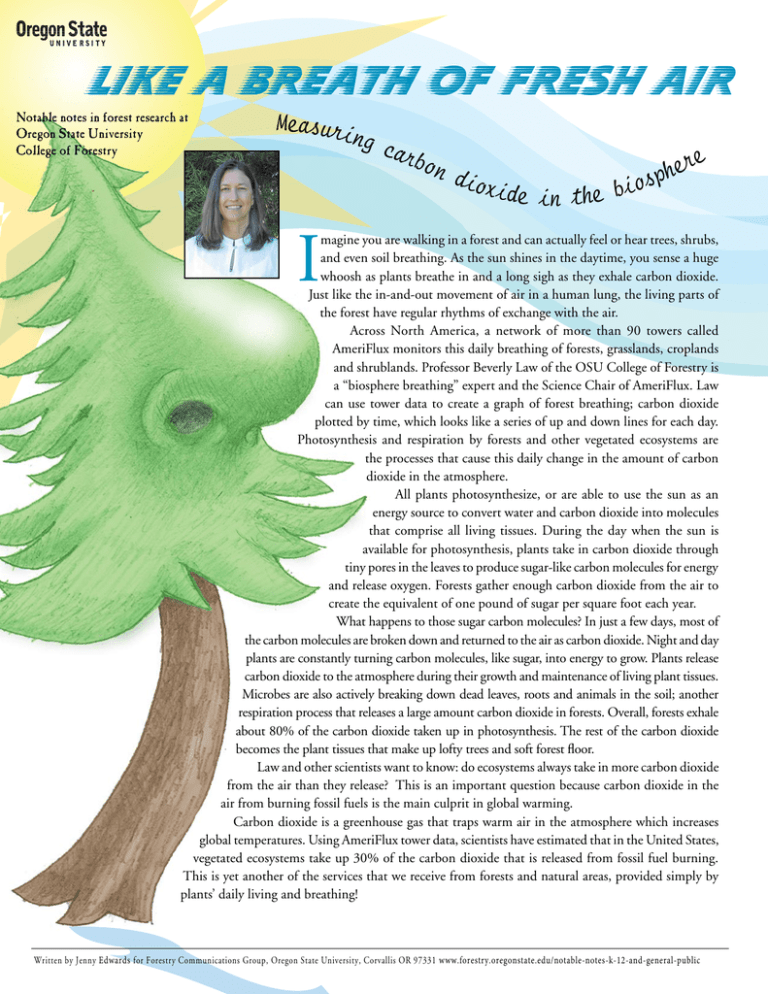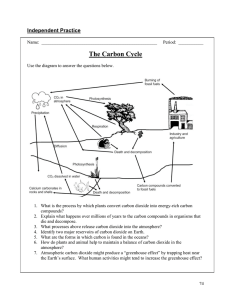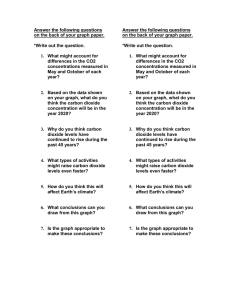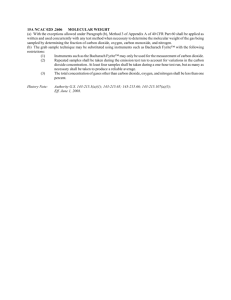Like a Breath of Fresh Air
advertisement

Like a Breath of Fresh Air Notable notes in forest research at Oregon State University College of Forestry Measuri ng c arb re on e h p diox ide in the bios I magine you are walking in a forest and can actually feel or hear trees, shrubs, and even soil breathing. As the sun shines in the daytime, you sense a huge whoosh as plants breathe in and a long sigh as they exhale carbon dioxide. Just like the in-and-out movement of air in a human lung, the living parts of the forest have regular rhythms of exchange with the air. Across North America, a network of more than 90 towers called AmeriFlux monitors this daily breathing of forests, grasslands, croplands and shrublands. Professor Beverly Law of the OSU College of Forestry is a “biosphere breathing” expert and the Science Chair of AmeriFlux. Law can use tower data to create a graph of forest breathing; carbon dioxide plotted by time, which looks like a series of up and down lines for each day. Photosynthesis and respiration by forests and other vegetated ecosystems are the processes that cause this daily change in the amount of carbon dioxide in the atmosphere. All plants photosynthesize, or are able to use the sun as an energy source to convert water and carbon dioxide into molecules that comprise all living tissues. During the day when the sun is available for photosynthesis, plants take in carbon dioxide through tiny pores in the leaves to produce sugar-like carbon molecules for energy and release oxygen. Forests gather enough carbon dioxide from the air to create the equivalent of one pound of sugar per square foot each year. What happens to those sugar carbon molecules? In just a few days, most of the carbon molecules are broken down and returned to the air as carbon dioxide. Night and day plants are constantly turning carbon molecules, like sugar, into energy to grow. Plants release carbon dioxide to the atmosphere during their growth and maintenance of living plant tissues. Microbes are also actively breaking down dead leaves, roots and animals in the soil; another respiration process that releases a large amount carbon dioxide in forests. Overall, forests exhale about 80% of the carbon dioxide taken up in photosynthesis. The rest of the carbon dioxide becomes the plant tissues that make up lofty trees and soft forest floor. Law and other scientists want to know: do ecosystems always take in more carbon dioxide from the air than they release? This is an important question because carbon dioxide in the air from burning fossil fuels is the main culprit in global warming. Carbon dioxide is a greenhouse gas that traps warm air in the atmosphere which increases global temperatures. Using AmeriFlux tower data, scientists have estimated that in the United States, vegetated ecosystems take up 30% of the carbon dioxide that is released from fossil fuel burning. This is yet another of the services that we receive from forests and natural areas, provided simply by plants’ daily living and breathing! Written by Jenny Edwards for Forestry Communications Group, Oregon State University, Corvallis OR 97331 www.forestry.oregonstate.edu/notable-notes-k-12-and-general-public






